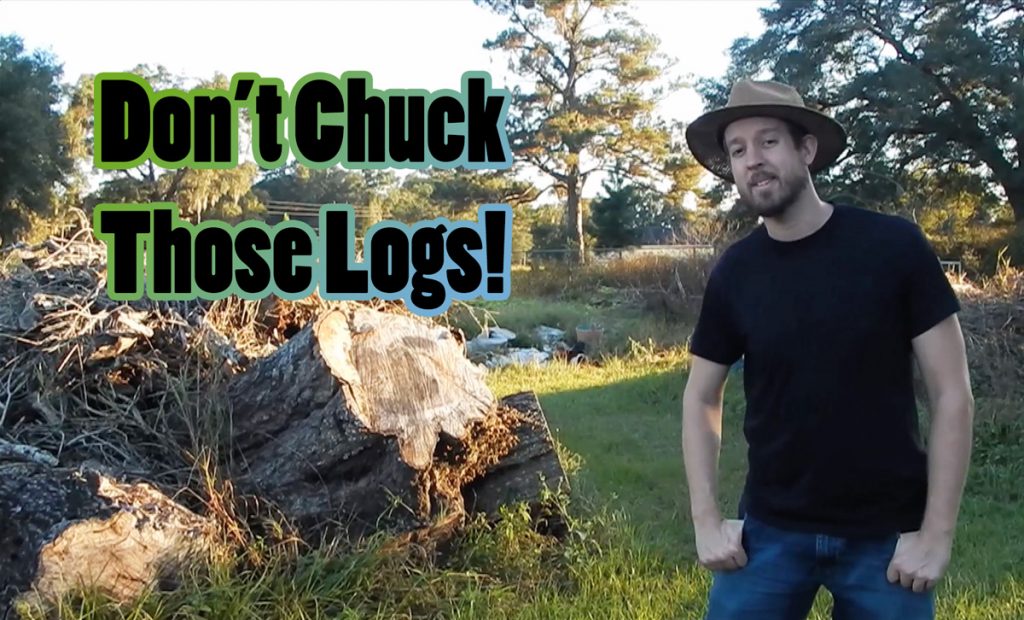
Rotting wood and logs are a great addition to the garden.
I see so many people – particularly in South Florida – dragging logs and palm branches to the side of the road in bins for trucks to haul away.
Quit doing that! As I cover in my book Compost Everything: The Good Guide to Extreme Composting and in glorious color film in Compost Everything: The Movie, wood is good for the soil. It breaks down into excellent humus which holds water. When you have poor soil, you want to increase humus and soil nutrition, not send it off to the city dump.
Here are three ways to use wood in your garden and increase your soil fertility long term.
1: Use Chunks of Wood for Garden Boundaries
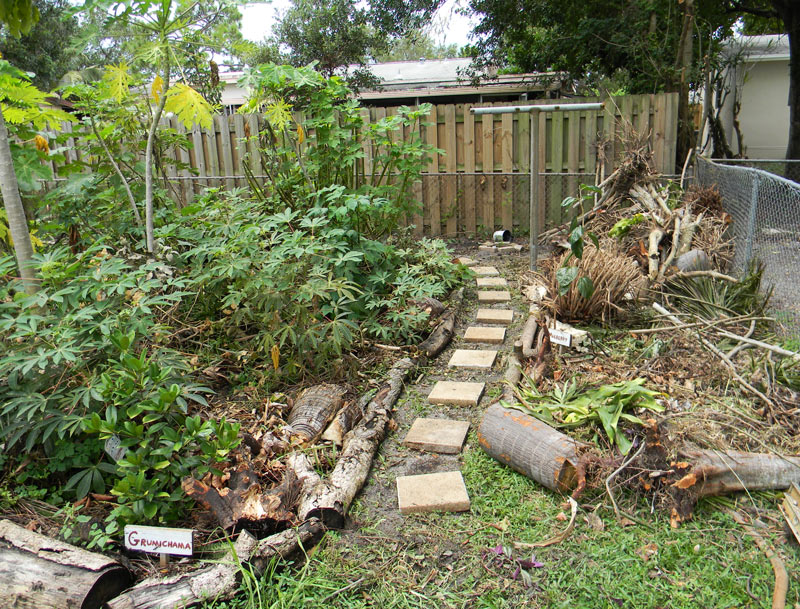
When my Dad and I built The Great South Florida Food Forest Project, we picked up all the yard “waste” we could find from nearby neighbors and then piled it up, lining the paths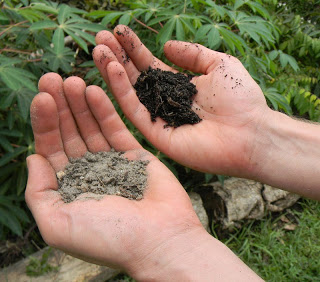 with the thicker branches and logs.
with the thicker branches and logs.
In a very short period of time, those logs started breaking down into rich soil.
Most of them aren’t there any more and need replacing… but you wouldn’t believe how nice the sand looks where they used to lie.
The image on the left shows what the sand looked like before and after we piled up organic matter.
People love to complain about how “bad” the sand is down in South Florida and how nothing grows there. Yet they rake up all their leaves and throw away logs.
Poor choices.
2. Make Hugelkulture Mounds
A friend of mine cleared a big area of her yard to open up the light for her edible crops, to get rid of the invasive trees, and to make sure hurricanes didn’t send any 2,000lb chunks of tree through her roof.
Instead of making a big burn pile or sending them off to the city, she made a gigantic pair of hugelkultur mounds.
She dug trenches, filled them with wood, then took all the mustard-covered soil on the left and buried the rotting wood.
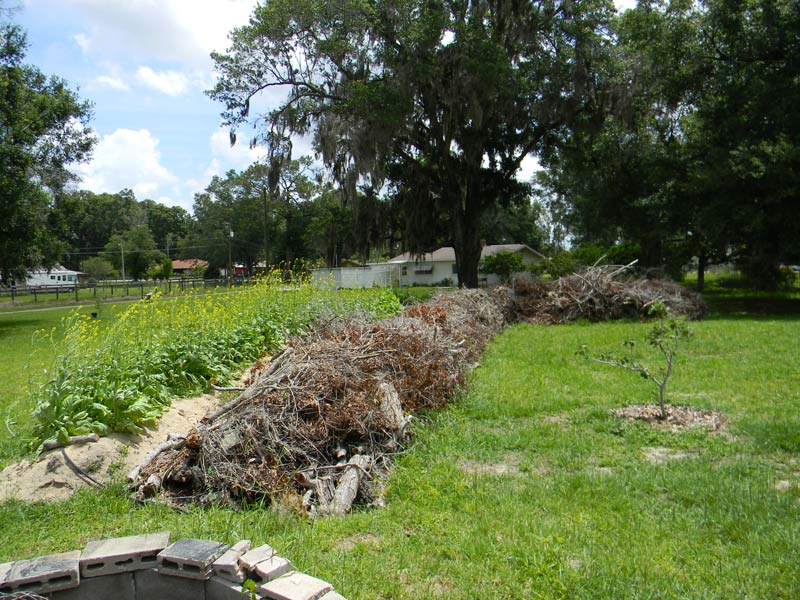
Now they are rich, flower and food-covered gardens.
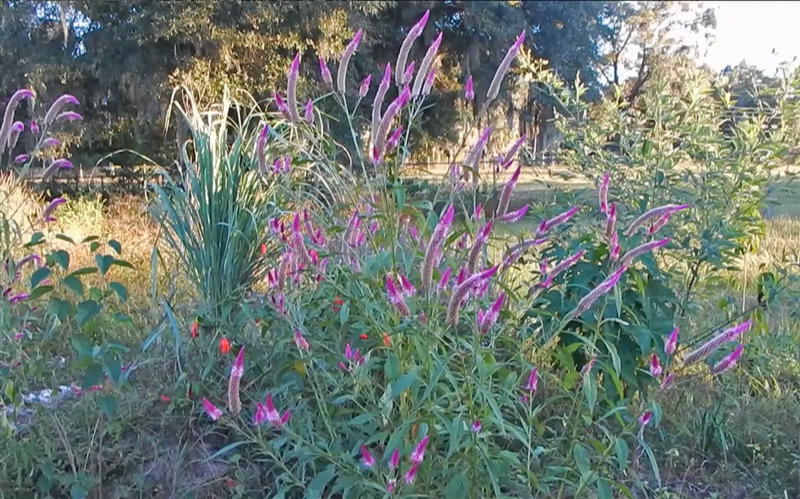
Hugelkultur gardens are an idea I picked up from Paul Wheaton, who in turn probably picked it up from Sepp Holzer.
They can improve the soil for decades.
3. Turn Those Logs into Biochar
When life gives you fallen trees, why not turn them into charcoal and improve your soil for not just decades… but generations!

I burn big open piles because I don’t want to bother making kilns or getting fancy. Plus, I want to fight global cooling.
Though turning charcoal directly into your soil will suck up nutrients and drop your yields, soaking the charcoal first in something like compost tea will allow it to become a resource bank for the soil. Charcoal pieces hold in fungi, bacteria and nutrition like little condominiums, thanks to the intricate pore structure of wood.
Steven Edholm recently shared some tests he did in three garden beds and I reshared it here.
Conclusion
It’s time to think differently about fallen logs and branches.
Don’t view them as “too big for the compost bin” and send them off.
Every time you do that you are exporting fertility from your property. Don’t.
Instead, use one of these three methods and you’ll not only improve your soil, you’ll keep useful material out of the waste stream.
I’ve done all three and my plants love the help. You can too – and can even make it look nice. I once grew a nice cabbage inside a rotting chunk of log I picked up by the side of the road.
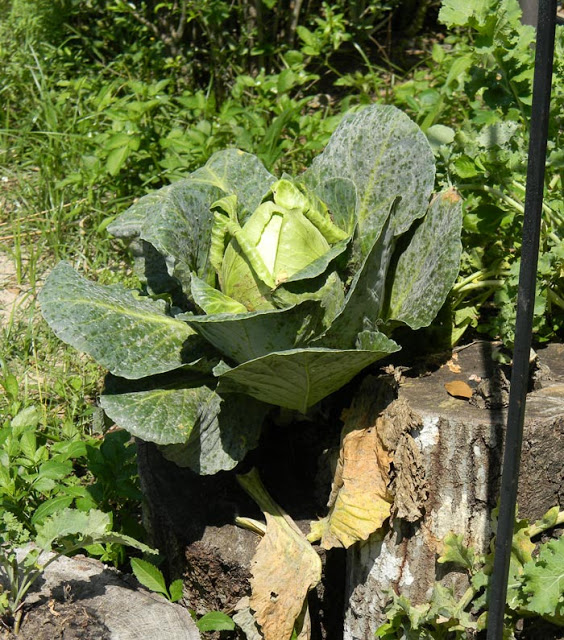
Worms, bacteria, fungi, beetles… all of these live in and out of the rotting wood and will happily break it down into rich soil for your garden.
Think differently about fallen trees and you’ll improve your soil long term. I guarantee it!


11 comments
How do I make compost tea?
This is how I make compost tea: https://www.youtube.com/watch?v=ZZquKZ6EVEY
We are still feeling the effects of Hurricane Matthew. All glory to God that it turned slightly to the east or it could have been a lot worse.
My point, if you are in an area affected by the hurricane, here is your chance to load up with yard waste and wood chips. Back to Eden garden anyone? I told my contact to start bringing wood chips again…only snag , FEMa is now involved so there may be a small hold up on the chips until they vamoose… still … a lot of stuff by the side of the road…and lots of wood chips should be available hopefully soon… take the lemons and make some lemonade.
Keith
Grab it all while you can. I’m glad it wasn’t too bad.
Logs turned into pots for plants look great.
I love this video by Hendrikus on Logs In the Landscape https://vimeo.com/98567314
Craig – that is a great video. Thank you. I think I’ll feature it in a future post.
I’ve done the charring and composting, but caution against using logs for landscape borders. I did this in Tallahassee, years ago, and created termite farms.
Termites do love them; however, they will turn them into nice soil. Probably beds next to the house would be a bad idea.
I agree, the termites are doing their job, making it easier for the log to absorb moisture and break down quicker. I see them as part of the natural biological process our soils need to be healthy. But as you say Mark, exercise some caution, and make sure those logs aren’t butted up against the house either. ;)
These are my thoughts too David. We live in bushland, so saplings turn into 30 meter giants, quickly. We’re always taking them out and finding new ways to use them. Our philosophy is to recycle them back into the landscape, because it’s like returning money into your ecological bank. Always save more than you spend, or at least plan to break even.
Forgot to mention, you can also turn large logs into garden seating. Or upend them, part buried in the ground, as a kid’s obstacle course. We just had two 30 meter trees felled recently, and our youngest could spend hours climbing all the bits. We also use them as bridges across waterways. Nothing fancy, and by the time they’re not stable enough to walk on any more, we turn them into hugelkultur beds. We’ve always got a fresh supply of logs to deal with!
Comments are closed.